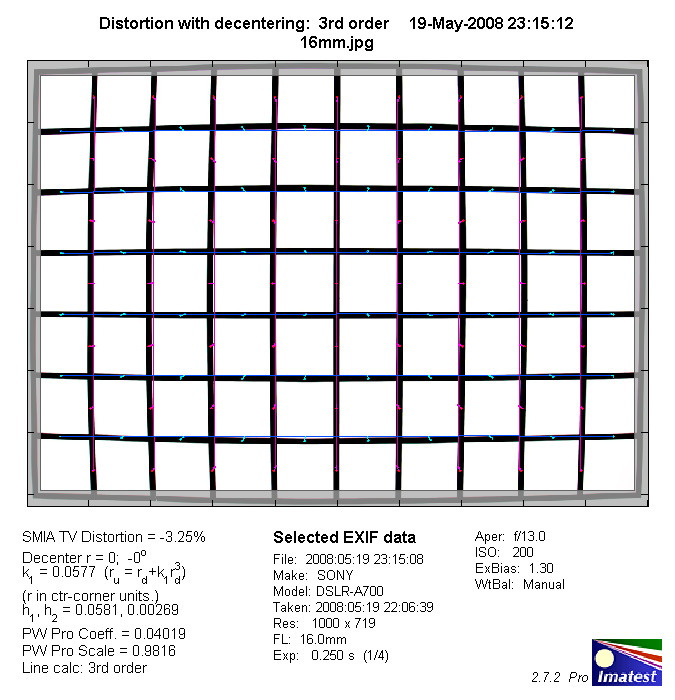|
Sony 16-105mm f/3.5-5.6 DT ( SAL-16105 ) - Review / Test Report - Analysis |
|
Lens Reviews -
Sony Alpha/NEX (APS-C)
|
|
Page 2 of 3

Distortion
As mentioned above we're talking about a 6.5x zoom lens here and in this class this translates to a fairly high amount of distortion. Typical for such lenses there's a fairly hefty amount of barrel distortion at 16mm (~3.3%) changing to moderate pincushion distortion at middle to longer focal lengths. The neutral point with basically negligible distortion is around 24mm.
|
Move the mouse cursor over the focal length text marks below to observe the respective distortion
|
| 16mm |
24mm |
50mm |
105mm |

|
The chart above has a real-world size of about 120x80cm.
Vignetting
Typical for many APS-C standard zoom lenses vignetting can be a rather critical issue at the wide end of the zoom range - ~1.7EV at 16mm @ f/3.5 is fairly massive and disturbing. Stopping down to f/5.6 resolves the most of the problem here and at 24mm. The vignetting is reasonably well controlled at 50mm and 105mm.

MTF (resolution)
The Sony lens produced a rather mixed bag of performance figures in the MTF lab. The center quality is very high at all focal length and it's even exceptional towards the wide end. However, the glory stops when looking at the borders. At large aperture settings the borders are generally soft and at 50mm they're downright poor. The quality increases rapidly when stopping down but it takes f/8 till the lens reaches its best performance (f/11 @ 50mm). The high zoom ratio does obviously take its toll here.
Please note that the MTF results are not directly comparable across the different systems!
Below is a simplified summary of the formal findings. The chart shows line widths per picture height (LW/PH) which can be taken as a measure for sharpness.
If you want to know more about the MTF50 figures you may check out the corresponding Imatest Explanations
Chromatic Aberrations (CAs)
Lateral chromatic aberrations (color shadows at harsh contrast transitions) are
quite low in the middle part of the zoom range but extreme (up to 2px) at 16mm and 105mm. This is far from being impressive although the problem is correctable to some degree if you bother with image post-processing e.g. via Adobe Lightroom.

|